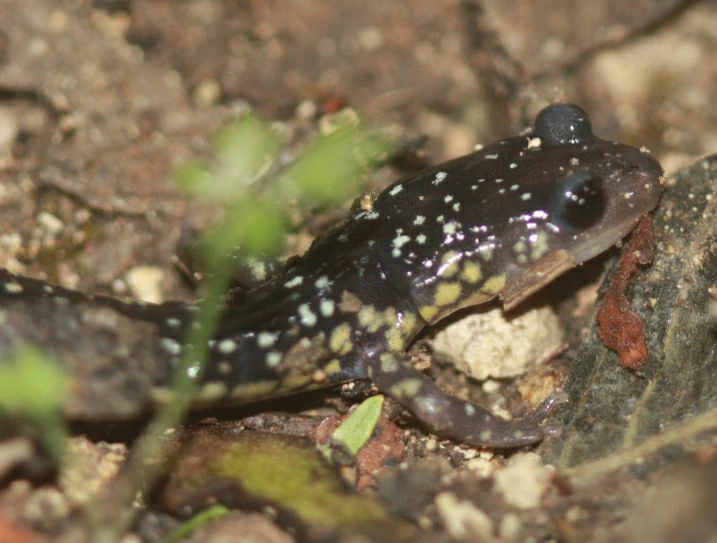Wax worms are soft-bodied, wiggly, and packed with fat. They seem like the perfect snack for a hungry salamander. But are they safe? And should they be part of a regular diet?
Yes, salamanders can eat wax worms, but they should only be fed as an occasional treat, not a main food source. Wax worms are high in fat and easy to digest, which makes them tempting for salamanders. But too many can lead to weight gain and other health issues.
It’s kind of like giving a kid too much candy, it might be fun for a while, but it’s not good long-term.
Why Wax Worms Appeal to Salamanders
Wax worms are actually the larvae of wax moths. They have soft bodies and a gentle wiggle that grabs a salamander’s attention right away. Many pet owners use them when their salamander is refusing to eat or needs a little boost.

They’re also easy to keep. You can buy them in little containers at most pet stores. They don’t need much care, and they stay alive for a while if you keep them cool.
Some people even say their salamanders get excited when they see the container come out.
Are Wax Worms Safe for Salamanders?
Yes, wax worms are safe to eat, as long as they’re alive and store-bought. Wild wax worms can carry parasites or pesticides, so always stick with clean, commercial sources.
But just because they’re safe doesn’t mean they’re a good everyday food.
Here’s why:
- High in fat: Wax worms are loaded with fat (about 24.9%) and very low in calcium. If you feed too many, your salamander might gain too much weight.
- Low in nutrients: Compared to things like crickets or earthworms, wax worms just don’t offer much. Think of them as a junk food version of bugs.
- Addictive: Some salamanders love them so much they’ll refuse other food after a while.
Because of that, wax worms are best saved for:
- A treat once or twice a week
- Feeding a salamander that’s been sick or not eating well
- Helping a picky eater start eating again
Can All Salamanders Eat Wax Worms?
Most salamanders will gladly eat wax worms. That includes:
- Tiger salamanders
- Axolotls
- Fire salamanders
- Spotted salamanders
- Marbled salamanders
- Newts (though more careful portioning is needed)
Even smaller species can eat wax worms, as long as the worm isn’t too big. If it is, just cut it in half.

That said, larval salamanders or very young ones may struggle with wax worms. They might be too large or too rich for tiny digestive systems. Stick to smaller food like daphnia or baby brine shrimp until they’ve grown a bit.
How Often Can You Feed Them?
As a rule of thumb: once or twice a week is plenty.

You can rotate wax worms with other feeders like:
- Crickets (gut-loaded)
- Earthworms
- Nightcrawlers
- Mealworms (in moderation)
- Black soldier fly larvae
- Isopods (for certain species)
Feeding a variety keeps your salamander healthy and interested in food. It also helps balance out the nutrition wax worms lack.
If your salamander starts refusing other food and only wants wax worms, take a break from them for a couple of weeks. Hunger will usually bring their appetite back around.
Can You Gut-Load or Dust Wax Worms?
Gut-loading means feeding insects nutritious food before offering them to your salamander. This boosts the nutrient value of the bug itself.
Unfortunately, wax worms are terrible at gut-loading. They mostly just eat wax, so you can’t really fill them with good stuff like you can with crickets or roaches.
However, you can dust them with calcium or vitamin powder before feeding.
To do this:
- Put a wax worm in a small container or plastic bag.
- Add a pinch of calcium or multivitamin powder.
- Gently shake it until the worm is lightly coated.
- Offer it to your salamander right away.
This helps balance out the low calcium content and supports healthy bones, especially for young or growing salamanders.
How to Feed Wax Worms the Right Way
Feeding wax worms is simple, but here are a few tips to make it even smoother:
- Use tweezers or feeding tongs. This keeps your fingers clean and avoids accidents.
- Don’t leave uneaten worms in the tank. Wax worms can burrow or die and start to smell.
- Make sure the worm is moving. Movement triggers the hunting instinct in salamanders.
- Supervise feedings. Especially in shared tanks, some salamanders may try to steal from others.
If your salamander is aquatic, like an axolotl, use long tweezers and drop the wax worm in the water right in front of it. Wax worms float for a while, so the movement helps them get spotted quickly.
What About Wax Moths?
Wax worms turn into wax moths if left too long, especially in warm temperatures. But should salamanders eat them?
Not really. Wax moths are harder to catch, low in nutrition, and not especially interesting to salamanders. Most won’t go after them. Stick with the larvae instead.
If your wax worms pupate, it’s best to throw the moths out and buy a new batch of worms.
Can Wax Worms Cause Impaction?
Impaction happens when a salamander eats something that gets stuck in its gut. It’s a serious issue, especially for smaller species.
Luckily, wax worms are soft and easy to digest. Unlike mealworms, which have a tough shell, wax worms rarely cause impaction.
Still, it’s always a good idea to:
- Feed appropriate sizes
- Use soft-bodied insects when possible
- Watch for signs of bloating or constipation
And if you’re worried your salamander has eaten something it shouldn’t have, contact a reptile vet right away.
Are There Better Alternatives?
If you want feeders that are a bit healthier for regular use, here are a few great options:
- Earthworms: Packed with protein and moisture, and easy to digest
- Black soldier fly larvae (calci-worms): Higher in calcium than wax worms, and still soft
- Silkworms: A great soft-bodied option with more balanced nutrition
- Daphnia, brine shrimp, or bloodworms: Great for aquatic or larval salamanders
These can all be rotated in along with the occasional wax worm treat.
Recent studies show that salamanders do better on high-protein, balanced diets. They stay healthier and handle stress better than when they eat high-fat foods.
The key is mixing things up so your salamander stays healthy and doesn’t get bored.
What If My Salamander Refuses Everything But Wax Worms?
It happens more often than you’d think.
Wax worms are rich and fatty, and some salamanders develop a taste for them the way we might crave pizza. If your salamander refuses to eat anything else, you’ll need to do a kind of “bug reset.”
Here’s how:
- Stop offering wax worms completely for at least a week.
- Offer a different food once every day, earthworms, crickets, black soldier fly larvae, etc.
- Remove uneaten food after 30 minutes.
- Be patient. A healthy salamander can go a little while without food.
Once your salamander gets hungry enough, it will usually go back to eating other insects.
Conclusion
Salamanders can definitely eat wax worms, and most will love them. But they’re best used as an occasional snack, not a staple food. The high fat content makes them more like dessert than dinner.
Use wax worms when you need to tempt a picky eater, reward your salamander, or help one recover its appetite. Just don’t overdo it.
Stick with a varied diet, offer different feeder insects, and dust or supplement when needed. That way your salamander stays healthy, active, and happy, and still gets to enjoy a wax worm now and then.
Hi, my name is Ezra Mushala, i have been interested animals all my life. I am the main author and editor here at snakeinformer.com.

